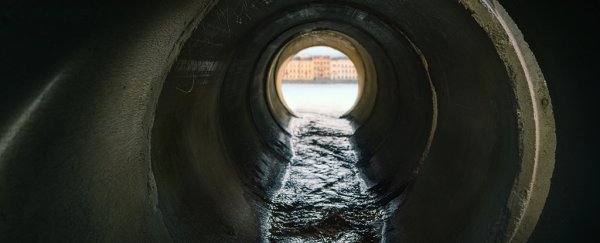The battle with the new coronavirus has been well and truly engaged across the world, and one of the fronts we're fighting on is trying to scale up testing measures so scientists can see where COVID-19 is spreading the most.
Large-scale data can be hugely helpful in tracking and controlling the spread of the disease, which doesn't always reveal itself through noticeable symptoms. In a new opinion piece submitted to Environmental Science & Technology, one team of researchers is now proposing a potential testing mechanism that promises to be fast, affordable, and accurate: it uses a paper-based device to detect the presence of SARS-CoV-2 in wastewater.
"We have already developed a paper device for testing genetic material in wastewater for proof-of-concept, and this provides clear potential to test for infection with adaption," says biomedical engineer Zhugen Yang, from Cranfield University in the UK.
"This device is cheap, costing less than £1 [US$1.24], and will be easy to use for non-experts after further improvement. We foresee that the device will be able to offer a complete and immediate picture of population health once this sensor can be deployed."
This research is part of an emerging field called wastewater-based epidemiology, or WBE. While it has its limitations, including difficulties in extrapolating results to a wider sample, it has a lot of advantages too – it's non-invasive, it gathers data in close to real time, and it's generally accurate.
The device Yang and his colleagues are proposing would be folded and unfolded in steps in order to filter nucleic acids of pathogens from the wastewater. Chemicals already added to the paper would then detect whether the nucleic acid of SARS-CoV-2 was present.
The result would be visible straight away – a green circle if the coronavirus was detected, and a blue circle if it wasn't. The paper devices would be easy to stack, store and transport, and could be burned after use.
Recent research has shown that the new coronavirus can be isolated from urine and faeces, and can survive for several days outside of a living organism, and that gives the scientists confidence that a wastewater test could work.
For now, it's just a concept and has not been put into practice, but it has obvious potential. In areas where SARS-CoV-2 was found, additional steps could be taken to minimise the spread, giving health authorities yet another way to get on top of the situation.
"In the case of asymptomatic infections in the community or when people are not sure whether they are infected or not, real-time community sewage detection through paper analytical devices could determine whether there are COVID-19 carriers in an area to enable rapid screening, quarantine and prevention," says Yang.
"If COVID-19 can be monitored in a community at an early stage through WBE, effective intervention can be taken as early as possible to restrict the movements of that local population, working to minimise the pathogen spread and threat to public health."
The research has been published in Environmental Science & Technology.
